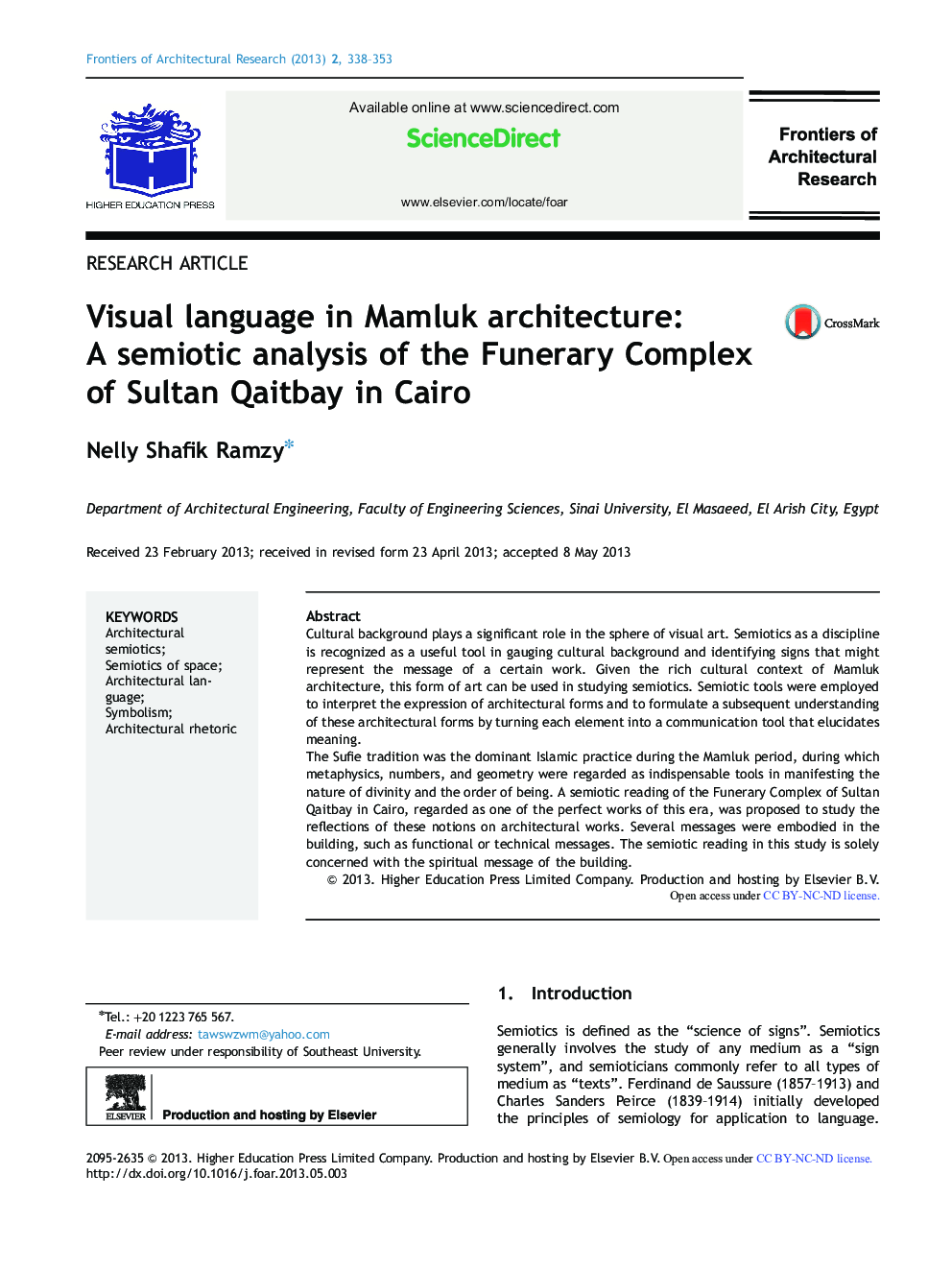| Article ID | Journal | Published Year | Pages | File Type |
|---|---|---|---|---|
| 270829 | Frontiers of Architectural Research | 2013 | 16 Pages |
Cultural background plays a significant role in the sphere of visual art. Semiotics as a discipline is recognized as a useful tool in gauging cultural background and identifying signs that might represent the message of a certain work. Given the rich cultural context of Mamluk architecture, this form of art can be used in studying semiotics. Semiotic tools were employed to interpret the expression of architectural forms and to formulate a subsequent understanding of these architectural forms by turning each element into a communication tool that elucidates meaning.The Sufie tradition was the dominant Islamic practice during the Mamluk period, during which metaphysics, numbers, and geometry were regarded as indispensable tools in manifesting the nature of divinity and the order of being. A semiotic reading of the Funerary Complex of Sultan Qaitbay in Cairo, regarded as one of the perfect works of this era, was proposed to study the reflections of these notions on architectural works. Several messages were embodied in the building, such as functional or technical messages. The semiotic reading in this study is solely concerned with the spiritual message of the building.
